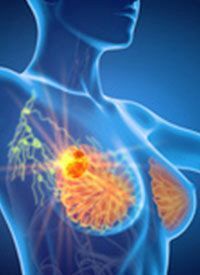Poziotinib Provides Clinically Meaningful OS Benefit in Metastatic HER2+ Breast Cancer
Poziotinib prolonged overall survival in heavily pretreated Korean patients with HER2-positive metastatic breast cancer.
Breast Cancer

Poziotinib prolonged overall survival (OS) in heavily pretreated Korean patients with HER2-positive metastatic breast cancer, according to data from the final planned analysis of the phase 2 NOV120101-203 trial (NCT02418689).1
The findings were presented during the 2022 ESMO Breast Cancer Congress and showed that at a median follow-up of 12.6 months, poziotinib resulted in a median OS of 17.7 months (95% CI, 12.4-20.8) in 102 evaluable patients. The 3-year OS rate was 18% (95% CI, 10%-28%).
Poziotinib also resulted in a median progression-free survival (PFS) of 4.0 months (95% CI, 3.0-4.4), and elicited an objective response rate (ORR) of 26%, with a disease control rate of 71%.
“[These] encouraging results provide an important update on the clinical effectiveness and safety of poziotinib in [patients with] HER2-positive metastatic breast cancer who were previously heavily treated,” lead study author Yeon Hee Park MD, PhD, of Sungkyunkwan University School of Medicine, wrote in a poster on the data.
NOV120101-203 evaluated poziotinib in patients with metastatic breast cancer with confirmed HER2 overexpression, per in situ hybridization or immunochemistry (IHC), according to the ASCO guidelines. To be eligible for enrollment, patients were required to have received prior taxane and at least 2 prior HER2-targeted therapies, including trastuzumab (Herceptin).
Study participants received 12 mg of oral poziotinib once daily on a 14-day-on, 7-day-off schedule. Treatment continued until patients experienced disease progression or unacceptable toxicity.
The primary end point of the trial was PFS, and secondary end points comprised OS, ORR, and safety.
Data from a primary analysis of the trial indicated that at a median follow-up of 12 months, poziotinib resulted in a median PFS of 4.04 months (95% CI, 2.94-4.40); the median OS was not yet reached.2 OS findings from the final planned analysis were presented during the meeting, which was done after 68 deaths occurred.
Among the 106 patients who comprised the safety set, the median age was 51 years (range, 30-76). Of those enrolled to the trial, 48.1% had estrogen receptor (ER)–positive and/or progesterone receptor (PR)–positive disease and 51.9% had ER-negative and PR-negative disease. Moreover, 14.2% of patients had an IHC status of 2+.
Patients had an ECOG performance status of 0 (37.7%), 1 (59.4%), or 2 (2.8%). Additionally, 51.9% of patients were postmenopausal and 76.4% had visceral disease. Distant metastatic sites included brain (5.7%), bone (35.9%), skin (10.4%), liver (38.7%), and lung (54.7%).
The median number of prior regimens received for advanced disease was 4 (range, 2-16). Notably, 45.3% of patients received at least 5 prior lines of therapy. Prior HER2-targeted therapies received included lapatinib (Tykerb; 94.1%), trastuzumab (90.2%), ado-trastuzumab emtansine (Kadcyla; T-DM1; 18.6%), trastuzumab plus pertuzumab (Perjeta; 8.8%), and afatinib (Gilotrif; 1.0%).
Additional data showed that among patients with visceral metastases, the median OS was 17.74 months (95% CI, 11.99-21.88) compared with 15.21 months (95% CI, 8.97-19.58) in those without visceral metastases (HR, 1.23; 95% CI, 0.72-2.12). In patients who received at least 4 prior lines of chemotherapy, the median OS was 14.29 months (95% CI, 9.72-20.90) vs 19.06 months (95% CI, 12.75-24.08) in those who received less than 4 lines (HR, 1.34; 95% CI, 0.82-2.21).
In patients who experienced a grade 2 or higher skin rash or diarrhea, the median OS was 19.06 months (95% CI, 14.23-22.08) compared with 11.10 months (95% CI, 6.54-19.06) in those who experienced skin rash or diarrhea that was less than grade 2 (HR, 0.46; 95% CI, 0.27-0.80).
All patients who received poziotinib experienced at least 1 AE of any grade. The most common any-grade AEs included diarrhea (96.23%), stomatitis (92.45%), pruritus (63.21%), rash (63.21%), dry skin (38.68%), dermatitis acneiform (32.08%), decreased appetite (26.42%), alopecia (23.58%), mucosal inflammation (19.81%), nausea (17.92%), dyspepsia (15.09%), fatigue (12.26%), rhinorrhea (12.26%), cough (11.32%), myalgia (11.32%), upper respiratory tract infection (11.32%), constipation (10.38%), Palmar-plantar erythrodysesthesia syndrome (10.38%), and vomiting (10.38%).
The most common AEs that were grade 3 or higher in severity were diarrhea (14.15%), stomatitis (12.26%), rash (3.77%), dermatitis acneiform (3.77%), and fatigue (1.89%).
References
- Park YH, Jung, K-H, Sohn J, et al. Poziotinib for HER2-positive metastatic breast cancer (MBC): Final clinical efficacy and safety results for long-term follow-up of the phase II NOV120101-203 trial. Ann Oncol. 2022;33(suppl 3):S207-S208. doi:10.1016/j.annonc.2022.03.195
- Park YH, Lee K-H, Sohn J, et al. A phase II trial of pan-HER inhibitor poziotinib, in patients with HER2-positive metastatic breast cancer who have received at least two prior HER2-directed regimens: the results of NOV120101-203 trial. Int J Cancer. 2018;143(12):3240-3247. doi:10.1002/ijc.31651



